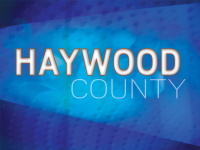Finding common ground
 Standing in the back of The Stompin’ Ground in Maggie Valley last week, several languages could be heard in every direction. To the right, Spanish and Estonian. To the left, French and Cherokee. All present for the “Opening Gala” of Folkmoot USA, all versed in the universal language of performance.
Standing in the back of The Stompin’ Ground in Maggie Valley last week, several languages could be heard in every direction. To the right, Spanish and Estonian. To the left, French and Cherokee. All present for the “Opening Gala” of Folkmoot USA, all versed in the universal language of performance.
“At festivals like these, people will always find a way to be understood,” said Stephane Kovari, a dancer from the Canadian group Manigance, based out of Quebec. “That’s the whole thing about doing this, you get put in situations where what else are you going to do? Sit in your room or intermingle? I’d rather make new friends, learn from other cultures, and teach others about my culture.”
Though we currently live in an era of globalization — where news, technology and ideas flow freely and openly between countries — there is still the obstacle of face-to-face communication. With hundreds of different languages around the world, making a connection between folks of different nationalities can be difficult.
But the beauty in that is finding other ways to bridge the gap, methods that change your train of thought and create opportunities for intimate interaction without a word even being said, or understood. And those connections are innumerable at Folkmoot USA, where the universal language is at play — music and dance.
“It can be difficult when only of a few of us speak English and others don’t speak Spanish,” said Gabriel Torres, guitarist for Chilean group Ballet Folklorico Universidad de Tarapaca. “But, we understand hands and movements, where we might not know the language, but you play music and dance — everyone understands that.”
Following each full day of performances around Western North Carolina, the dance and music groups all congregate back at the Folkmoot USA headquarters in Waynesville, where they are housed, fed and entertained. During dinner, one dance troupe is chosen as the host for the evening. Known as “late-nighters,” the host country gets up onstage in the cafeteria to perform their native songs, and show other groups their unique dance moves.
Related Items
“We all came here for the same reasons and everyone is so pleasant to each other,” said Ritchel Gazo, a performer in the Parangal Dance Company, a San Francisco-based Filipino group. “And the late-nighters are a way to bring everyone together, to spend time together through games and cultural education.”
During the Saturday late-nighter, Areyto Ballet (Puerto Rico) was the host. Taking the stage in their festive costumes and 10-string acoustic guitars, the ensemble performed their routine, only to share the techniques step-by-step with anyone who wanted to join (or was pulled up from their table). Soon, you had faces from Ecuador sharing the dance floor with Estonians, all using their hands, feet and joyous smiles to convey the unbreakable bond of humanity that is solely found in the art of performance.
“Dancing and music is what we all have in common,” Gazo said. “It is how we portray love, war, peace and friendship. There are so many ways to show that, and we all understand that in our ways.”









